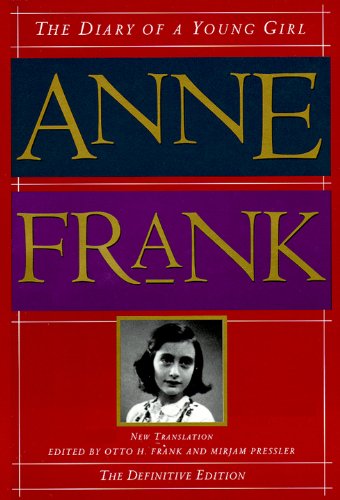
Coming right from the heart of a 12 year old girl, this book cannot be dismissed as a babble written from an immature mind. On the very contrast, it is written nicely, and with a good deal of maturity to it. Anne Frank wrote it in the form a diary while she was living in a hiding place called Secret Annex, along with 7 other people. While other Jews were forcibly taken to concentration camps, her family managed to find a place where they could live slyly. It was in the Secret Annex that she took to writing, and in the days to come, this dairy became her best friend.
She starts every chapter with a date, and the salutation, ‘Dear Kitty’: she calls her diary by this name. Initially, she is skeptical if her thoughts mean anything to anyone, she pens them down anyway. Different chapters reflect her different states of her minds while living there in isolation from the rest of the world. At times, she is too optimistic that they will be able to walk freely on earth one day, and that her family is lucky to find a hiding place, at other times, she feels terrified, pessimistic, and depressed of living with a bleak future, of getting caught and taken to concentration camps.
In her diary, she has scrutinized almost about everything and every person she is in touch with. She writes about her mother with whom she feels alienated. The explains at length the way she feels insulted, blamed, and unprotected when Edith Frank (her mother) does not take her seriously. She talks about her equation with ever-fighting couple, van Daans, and the suffocative environment that gives her no room for privacy. Writing is her only outlet, her only way of feeling free from all bondages.
In her diary, she has also written about the changes in her body brought about her puberty, her fascination for female anatomy, here longing to kiss her love, Peter. And on a completely different side, she writes what it is to be lived in a constant fear and under innumerable restrictions. It is a bang on door, and all of them start panicking.
The book paints an emotional picture about the relationships and the extremely difficult times she was living in. She has done a fantastic job in doing so. Her stance on adults’ behavior and unwillingness to conform to society’s norms reflect her independent nature. Written in a simple language, this book is a mirror of the times when a particular section of society was condemned and treated brutally by the other so called ‘refined’ strata. All seen through the eyes of a young girl, a girl who herself was undergoing through several tumults inside her. The way she pours out her heart to her diary touches the reader’s heart. A highly recommendable piece.
There have been several versions of this book available across different languages. A few of these are recommended here. While some are the revisions of the original, others have been written by her childhood friends and acquaintances and throw more light on the type of life peopel were living in concentration camps.
She started writing her dairy on June 12, 1942 and ended it on August 1, 1944. It was only three days later that their hiding was revealed and they were taken to concentration camps. Throughout the book, she has made some cute sketches of the tidbits around her, Her tone remains personal throughout. The dairy was later retrieved by Miep Gies, who handed it to Otto Frank, Anne’s father.
She explains everything in detail, whether it is her lost fountain pen, or her love with Peter, or her discord with her mother. She writes about her loneliness, and about a deeper personality that lies within her, oblivious to the outside world. She gives frank opinion about anything or anyone. She even scrutinizes herself at times.




